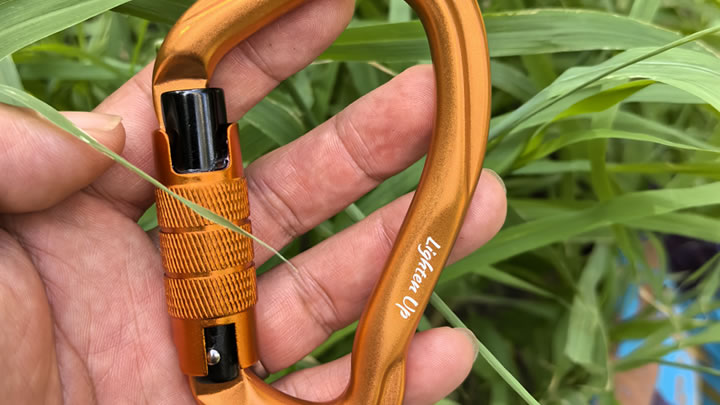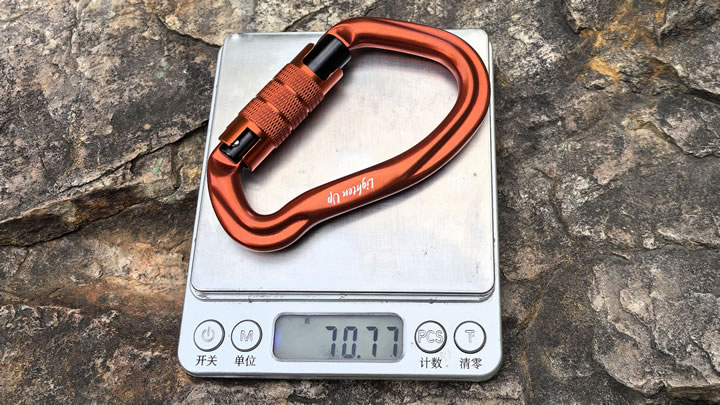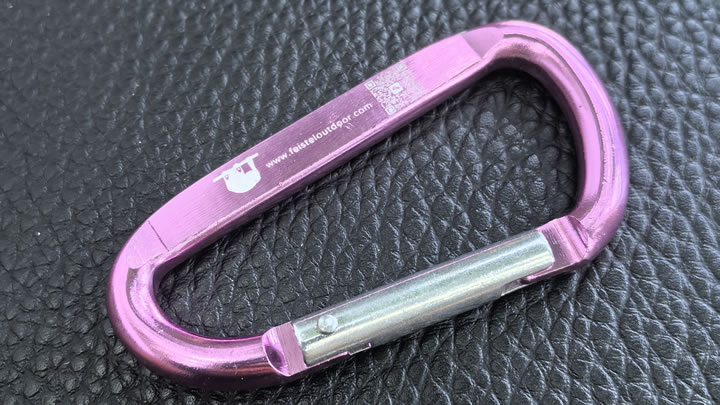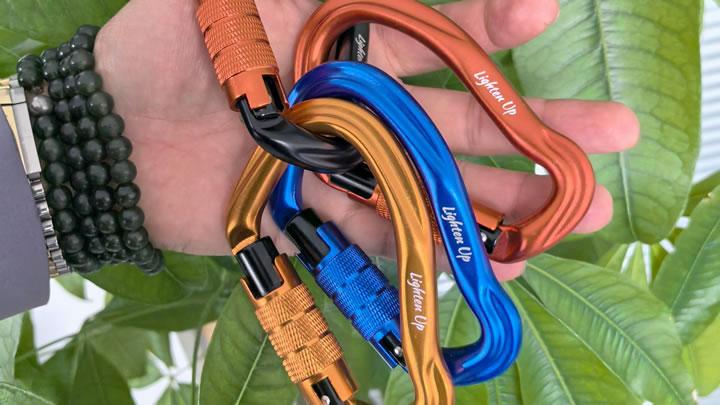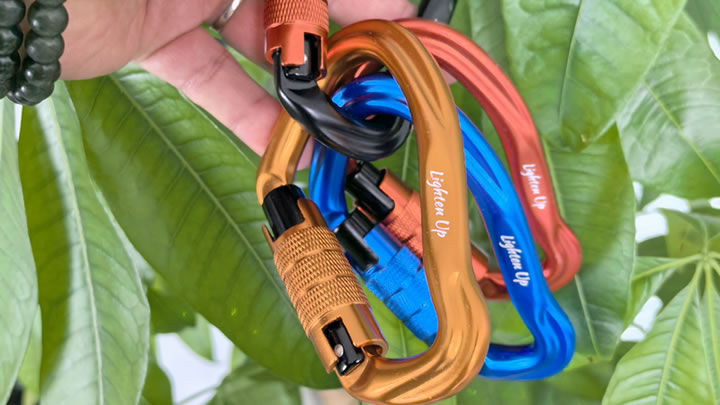Can climbing carabiners rust in wet conditions?
The short answer? Yes, but it depends on material, environment, and maintenance. Climbing carabiners face rain, saltwater, and humidity, but not all corrosion is equal. Understanding how rust forms—and how to prevent it—could save your gear from sudden failure. Let’s dive into the science, risks, and solutions.
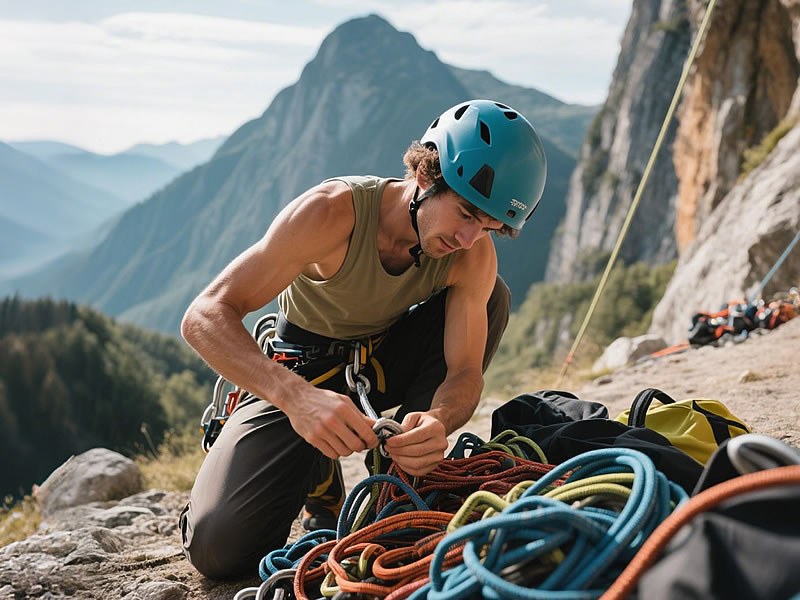
Material Matters: Aluminum vs. Steel
Carabiners are made from two metals, each with unique vulnerabilities:
- Aluminum Alloys (7075-T6/6061-T6):Pros: Lightweight (30-50g), naturally rust-resistant.Cons: Prone to galvanic corrosion in saltwater or acidic rain (e.g., industrial areas). White oxide forms, weakening structural integrity.Example: Petzl Spirit shows pitting after 100+ saltwater exposures.
- Stainless Steel (304/316 grade):Pros: Superior corrosion resistance; ideal for coastal or via ferrata use.Cons: Heavier (80-120g), costs 2x more. Non-stainless steel (e.g., carbon steel) rusts rapidly.Example: Edelrid Strike SL steel carabiners survive 500hr salt-spray tests.
How Different Wet Environments Attack Gear
| Environment | Risk Level | Corrosion Type | Prevention Tips |
|---|---|---|---|
| Freshwater (rain) | Low | Surface oxidation | Dry thoroughly after use. |
| Saltwater (ocean) | High | Galvanic/pitting corrosion | Rinse with freshwater ASAP. |
| Humidity (tropical) | Moderate | Crevice corrosion | Store with silica gel packs. |
| Acid rain (urban) | High | Chemical etching | Avoid prolonged exposure. |
UIAA/CE Certification: What the Tests Miss
Both UIAA and CE require corrosion resistance tests, but standards vary:
- UIAA: Salt spray test (5% NaCl solution, 48hrs) + visual inspection.
- CE: Humidity exposure (95% RH, 168hrs) for basic oxidation checks.
Critical gap: Neither test simulates long-term coastal use or acid rain. A carabiner passing UIAA/CE may still corrode after 6 months near the ocean.
5 Signs Your Carabiner Is Rusting Dangerously
- Pitting: Small holes on the surface (aluminum) or reddish flakes (steel).
- Sticky Gate: Corrosion debris jams the spring mechanism.
- Chalky Residue: White powder (aluminum oxide) near the spine.
- Reduced Strength: A rusted steel carabiner loses 30-50% kN rating.
- Rope Damage: Rough edges from corrosion shred sheath fibers.
Step-by-Step Corrosion Prevention
- Post-Climb Rinse: Use freshwater (never saltwater!) to flush grit and salt.
- Dry Thoroughly: Disassemble if possible; air-dry in shade (sun warps metal).
- Lubricate: Apply silicone spray to hinge points (avoid petroleum oils).
- Inspect Monthly: Use a 10x magnifier to check for micro-pitting.
- Store Smart: Keep in a breathable bag with moisture absorbers.
When to Retire a Rusty Carabiner
Immediate retirement is required if:
- Pits exceed 1mm depth (per UIAA safety guidelines).
- The gate requires force to open/close.
- Rust compromises the rope-bearing surface.
For minor surface rust on steel carabiners:
- Sand gently with 400-grit paper.
- Re-test strength with a calibrated load cell.
Best Rust-Resistant Carabiners
| Model | Material | Corrosion Protection | Best For |
|---|---|---|---|
| Edelrid Strike SL | 316 Stainless Steel | Electropolished finish | Coastal climbing |
| DMM Shield | Anodized Aluminum | Hardcoat anodizing (25µm) | Alpine routes |
| Kong Stainless | 304 Stainless Steel | Passivated surface | Via ferrata |
Expert Insight
*“Saltwater is a carabiner’s silent killer. I’ve seen ‘perfect-looking’ aluminum biners snap at 50% load due to internal corrosion. Always rinse, dry, and inspect—no shortcuts.”*—Sarah Hueniken, IFMGA Guide & Big Wall Climber
Myth Busting: “Rust Is Just Cosmetic”
Lab tests prove otherwise:
- A study by Rock and Ice Gear Lab found pitted aluminum carabiners failed at 12 kN vs. their rated 22 kN.
- Rusted steel carabiners showed 40% faster crack propagation under cyclic loads.
The Future: Anti-Corrosion Tech
Innovations to watch:
- Graphene coatings: 5x more corrosion-resistant than anodizing.
- Self-healing alloys: Microscopic capsules release anti-rust agents when scratched.
- Smart sensors: Bluetooth-enabled carabiners alert users to internal corrosion.
While climbing carabiners can rust, proactive care drastically extends their life. Prioritize stainless steel for wet environments, adopt military-grade drying routines, and remember: Corrosion doesn’t announce itself—it creeps. When in doubt, retire gear early. As the saying goes: “Trust your life to metal, but never trust metal blindly.”

